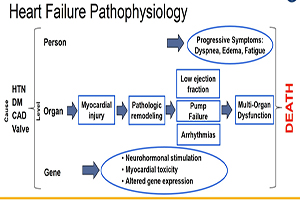Current indications for transplantation: stratification of severe heart failure & shared decision-making
Abstract
Heart failure (HF) is a complex clinical syndrome that results from structural or functional cardiovascular disorders causing a mismatch between demand and supply of oxygenated blood and consecutive failure of the body’s organs. For those patients with stage D HF, advanced therapies, such as mechanical circulatory support (MCS) or heart transplantation (HTx), are potentially life-saving options. The role of risk stratification of patients with stage D HF in a value-based healthcare framework is to predict which subset might benefit from advanced HF (AdHF) therapies, to improve outcomes related to the individual patient including mortality, morbidity and patient experience as well as to optimize health care delivery system outcomes such as cost-effectiveness. Risk stratification and subsequent outcome prediction as well as therapeutic recommendation-making need to be based on the comparative survival benefit rationale. A robust model needs to (I) have the power to discriminate (i.e., to correctly risk stratify patients); (II) calibrate (i.e., to show agreement between the predicted and observed risk); (III) to be applicable to the general population; and (IV) provide good external validation. The Seattle Heart Failure Model (SHFM) and the Heart Failure Survival Score (HFSS) are two of the most widely utilized scores. However, outcomes for patients with HF are highly variable which make clinical predictions challenging. Despite our clinical expertise and current prediction tools, the best short- and long-term survival for the individual patient, particularly the sickest patient, is not easy to identify because among the most severely ill, elderly and frail patients, most preoperative prediction tools have the tendency to be imprecise in estimating risk. They should be used as a guide in a clinical encounter grounded in a culture of shared decision-making, with the expert healthcare professional team as consultants and the patient as an empowered decision-maker in a trustful safe therapeutic relationship.
Cover






